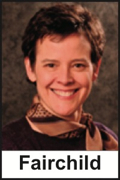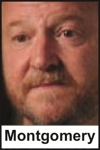Rascals case in brief
In the beginning, in 1989, more than 90 children at the Little Rascals Day Care Center in Edenton, North Carolina, accused a total of 20 adults with 429 instances of sexual abuse over a three-year period. It may have all begun with one parent’s complaint about punishment given her child.
Among the alleged perpetrators: the sheriff and mayor. But prosecutors would charge only Robin Byrum, Darlene Harris, Elizabeth “Betsy” Kelly, Robert “Bob” Kelly, Willard Scott Privott, Shelley Stone and Dawn Wilson – the Edenton 7.
Along with sodomy and beatings, allegations included a baby killed with a handgun, a child being hung upside down from a tree and being set on fire and countless other fantastic incidents involving spaceships, hot air balloons, pirate ships and trained sharks.
By the time prosecutors dropped the last charges in 1997, Little Rascals had become North Carolina’s longest and most costly criminal trial. Prosecutors kept defendants jailed in hopes at least one would turn against their supposed co-conspirators. Remarkably, none did. Another shameful record: Five defendants had to wait longer to face their accusers in court than anyone else in North Carolina history.
Between 1991 and 1997, Ofra Bikel produced three extraordinary episodes on the Little Rascals case for the PBS series “Frontline.” Although “Innocence Lost” did not deter prosecutors, it exposed their tactics and fostered nationwide skepticism and dismay.
With each passing year, the absurdity of the Little Rascals charges has become more obvious. But no admission of error has ever come from prosecutors, police, interviewers or parents. This site is devoted to the issues raised by this case.
On Facebook
Click for earlier Facebook posts archived on this site
Click to go to
Today’s random selection from the Little Rascals Day Care archives….
Click for earlier Facebook posts archived on this site
Click to go to
Today’s random selection from the Little Rascals Day Care archives….
‘Long history of panic’ extended to day-care cases
 Feb. 6, 2013
Feb. 6, 2013
“Panic provides a rationale for action, sometimes overreaction or even manipulation. As such, it is the subject of heated accusation and denial that can create a swirl of confusion and frustration.
“Nonetheless, some lessons stand out in the long history of panic. There is no basis for imagining that the frenzied 19th century reactions to disease are a slumbering beast waiting to be roused. Too much government infrastructure and information stand between populations and unfettered panic….”
– From “A Brief History of Panic” by Amy L. Fairchild, David Merritt Johns and Kavita Sivara Makrishnan, public health researchers at Columbia University (the New York Times, January 28, 2013)
“Frenzied…. reactions” to disease epidemics may have subsided since the 19th century, but they were crucial in animating the day-care ritual-abuse prosecutions of the 1980s and ’90s. And “government infrastructure” – that is, district attorneys’ offices – wasn’t a deterrent but an accelerant!
N.C. law stacked deck against defendants
Oct. 17, 2011
The two largest ritual-abuse day-care cases – Little Rascals in Edenton and McMartin in California – bore many similarities but McMartin resulted in not a single conviction.
 I asked Mark Montgomery, who in 1995 successfully argued Bob Kelly’s case before the North Carolina Court of Appeals, why that might have been:
I asked Mark Montgomery, who in 1995 successfully argued Bob Kelly’s case before the North Carolina Court of Appeals, why that might have been:
“Each state has its own criminal laws, rules of procedure and evidence, etc. … Several features of the law in North Carolina gave prosecutors an advantage.
“First, the prosecution interviewed all the children attending Little Rascals Day Care. Most said they had seen no abuse. The law allowed the prosecution to withhold those interviews from the defense. And the defense was not allowed to interview the children. So all the jury heard were the stories of the 12 children who were the subject of indictments.
“Second, the law allowed the state’s expert witnesses to testify that they believed the children’s claims.
“Third, the defense was not allowed to conduct its own physical or psychological examinations of the children.
“Fourth, North Carolina had (and has) very liberal rules for the admission of hearsay by children in these cases. Almost anything a child says out of court can be used by the jury as substantive evidence of guilt. An effective prosecution strategy was to enlist the parents to elicit allegations of abuse. For months, parents, who were told their children had been abused, pleaded with their children to ‘disclose.’ Some eventually did. The prosecution then called the parents as witnesses to testify to what their children said, even if the children themselves did not testify.”
Beware the next generation of Indian captivity tales
Aug. 20, 2012
Endlessly fascinating – and baffling – is how some experts fell headlong for “satanic ritual abuse,” while others managed to keep their wits. This is from an April 25, 1989, Associated Press story:
“David G. Bromley, a sociologist at Virginia Commonwealth University in Richmond, Va., sees not an increase in satanic crime, but a ‘cult scare’ that has more to do with urban legends and modern psychology than with criminology.
“‘I think it’s all a hoax,’ says Bromley, who investigated allegations of cult ‘brainwashing’ in the 1970s that were never proven.
“Bromley says rumors about rings of adults who start day care centers to find children to abuse in satanic rituals are ‘sheer fantasy’ – but fantasy fed by reports of real child abuse and by today’s parents’ guilt and fears of entrusting their children to strangers.
“‘It is not coincidental that allegations of satanic conspiracies are centered on day care centers,’ he says.”
April 25, 1989! Bob Kelly was attending his probable cause hearing. The first McMartin trial was still ongoing. Stephen Ceci and Maggie Bruck were six years from publishing their landmark “Jeopardy in the Courtroom: A Scientific Analysis of Children’s Testimony.” So how was David Bromley able to see through the fog?
“This kind of ‘subversion episode’ is not new,” he told me recently. “There has been one every few decades in American history. The focus has changed but not the phenomenon. Indian captivity tales, Salem witch trials, drug scares, communist scares, immigrant scares, UFO scares.
“There has always been some group or coalition that has found social insecurities a way of advancing its own status. In this case police and therapists made careers out of the episode.
“The story was only plausible for a limited period, and these kinds of events tend to implode eventually. But there are a lot of casualties in the meantime.
“It will happen again, I am sorry to say.”
And when it does…?
Immunity of office allows zeal, recklessness to go unchecked

longform.org
Ariel Levy
June 29, 2016
“Compensation is intended in part as a deterrent: a municipality that has to pay heavily for police or prosecutorial misconduct ought to be less likely to allow it to happen again. But it is taxpayers, not police or prosecutors, who bear the costs of litigation and compensation. Prosecutors enjoy almost total immunity in cases of misconduct, even if they deliberately withhold exculpatory evidence from a jury. A 2011 Supreme Court ruling also made it virtually impossible to sue a prosecutor’s office for such violations….”
– From “The Price of a Life: What’s the right way to compensate someone for decades of lost freedom?” by Ariel Levy in the New Yorker (April 13, 2015)
To “deliberately withhold exculpatory evidence” seems all too neatly illustrated in Bob Kelly’s trial. Here’s how the North Carolina Court of Appeals described the prosecution’s actions:
“Judge L. Bradford Tillery, a pretrial Judge, directed the State to file and present for in camera review identifying information, medical and psychotherapeutic files and DSS files with respect to the ‘indictment children’….
“In apparent compliance with Judge Tillery’s order… the State turned over a box of files to the trial court, Judge (Marsh) McLelland presiding. The box contained, inter alia, complete medical notes and therapy notes on the 29 indictment children, 12 of whom testified at defendant’s trial and 17 of whom did not….
“After trial, defendant’s appellate counsel went to the Office of the Clerk of Court for Pitt County to view the exhibits. He opened several boxes containing trial exhibits, none of which were sealed. One of the boxes contained 29 files labeled with the names of the indictment children…. Defendant argues that the files contained undisclosed information that would have been material to the defense.”
To wit, the withheld files were bulging with exculpation – conflicting claims, evidence of hysteria, eyewitness testimony that nothing happened.
Prosecutors H.P. Williams Jr., Bill Hart and Nancy Lamb walked away rebuked by the Appeals Court but otherwise unpenalized. How differently might the Little Rascals case have unfolded had they known their recklessness wouldn’t be shielded by prosecutorial immunity?
![]()











0 CommentsComment on Facebook